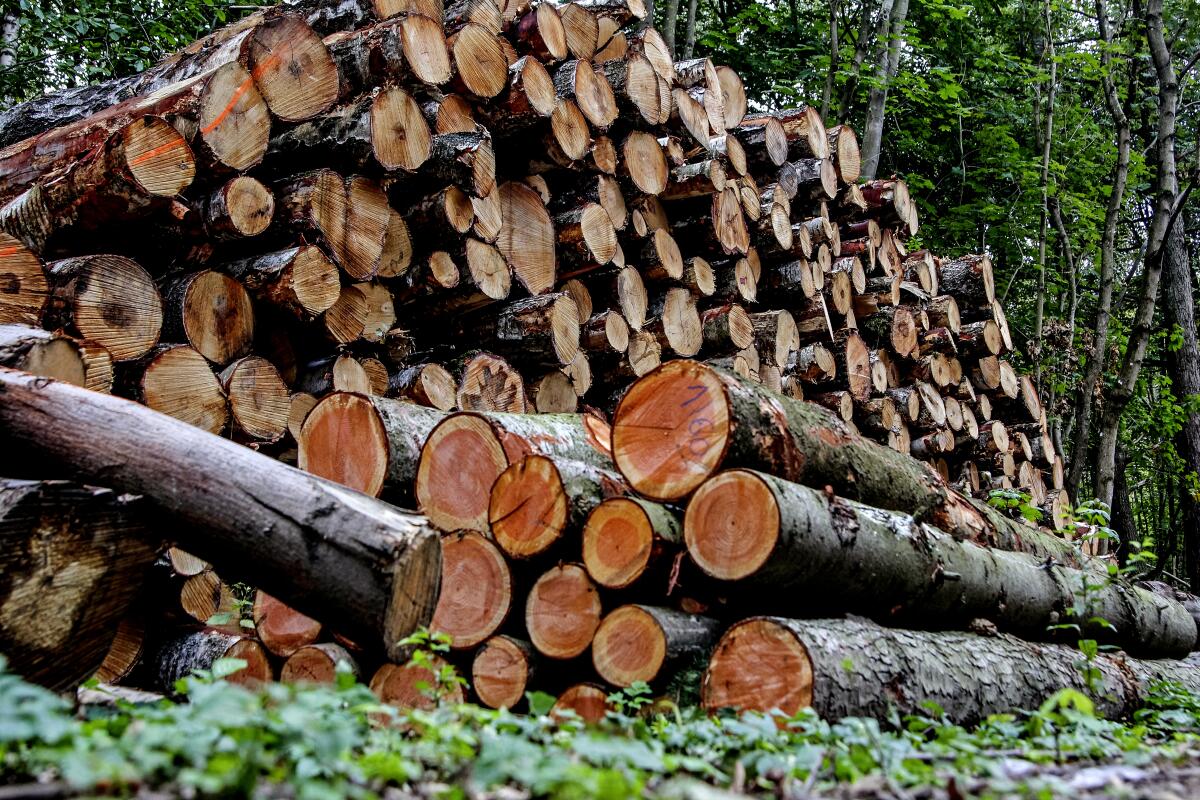Op-Ed: Is burning wood for power carbon-neutral? Not a chance

The mammoth pandemic stimulus and spending bill Congress passed last week includes billions of dollars to expand solar, and wind energy. These are good measures to address greenhouse gas emissions. But the bill also contains a rider that would undercut those efforts.
A provision added to the bill, pushed for by Sen. Susan Collins (R-Maine), declares that cutting down trees and burning them for energy is carbon-neutral. This, of course, makes no sense. Burning wood will add to global warming — even if the wood replaces coal or natural gas, as scientific organizations and hundreds of scientists have long argued.
For decades, the wood industry has generated electricity and heat by burning wood wastes from harvesting and turning wood into paper and timber. Doing that makes sense because using the waste does not require cutting down more trees.
In recent years, however, there has been a bizarre but dangerous push to retrofit power plants and factories to burn wood. The European Union has spurred this effort by adopting laws to require more low-carbon renewable energy (which by themselves are good), but then simultaneously allowing wood to count as a carbon-free, renewable fuel. Countries in the EU responded by subsidizing power plants to burn wood. Utilities lobbied for this shift after realizing that their coal-fired power plants could stay in business if modified at public expense to mix in some use of wood.
But the process of burning wood results in more carbon being released into the atmosphere than burning coal. This happens in two ways. Trees in a forest store carbon and keep it out of the atmosphere. When trees are cut down, more than half the wood is left to rot or burned in producing a usable form of fuel (usually wood pellets), which releases carbon into the air. The wood fuel that is ultimately burned in power plants generates still more carbon. Overall, using wood produces two to three times as much carbon per kilowatt hour as burning coal or natural gas.
Of course, trees may grow back, reabsorbing carbon, but they do so slowly. Meanwhile, more and more trees are harvested and burned for energy. It takes decades of regrowth to offset the carbon released in burning before the net addition of carbon to the air even equals the amount released if power plants had just used fossil fuels. During these decades, warming increases and permafrost and glaciers continue to melt, among other permanent forms of climate damage. Even worse, utilities using wood to meet clean energy requirements displaces the use of truly clean energy sources such as solar or wind.
The origins of this bizarre way of thinking about burning wood for power generation lies in a misinterpretation of scientific guidance about how to count emissions. Since the early 1990s, countries have reported their emissions each year to the United Nations as part of a global treaty, the U.N. Framework Convention on Climate Change. Because it is easier to count the carbon to be released from trees as soon as they are cut, a global scientific panel told countries to report the carbon at that stage. To avoid double-counting, countries then do not count the carbon released into the atmosphere when the wood is burned. This national reporting system works because the emissions are counted somewhere.
Unfortunately, lawmakers have misread this rule as a declaration that carbon from burning wood can be ignored entirely in national and local laws for power plants and factories — as has been the case with Europe’s renewable energy laws and emissions trading system. The reporting to the U.N. does not cure the fact that countries are encouraging power plants and factories to do the wrong thing.
Burning wood for energy is accelerating with alarming speed in Europe. One study in the journal Nature found a 70% increase in Europe’s tree-cutting since 2015. And much of Europe’s wood is coming from the U.S. If the world tried to pursue this strategy at even a small scale, the consequences would be dire for the world’s forests. To replace just 2% of the world’s fossil fuels with more wood would require doubling the commercial harvest of trees.
Facing public criticism, the government of the Netherlands and several major political parties in Denmark have promised to phase out the use of wood (although details are still forthcoming).
Now some in Congress are pushing the U.S. to go down the wood-burning path. The good news is that the rider, attached to the spending bill, only lasts through September 2021, when the budget expires. President-elect Joe Biden ran on a strong climate platform, including preserving forests. He and his new environmental team should take care not to allow the U.S. to fall into this trap.
Tim Searchinger is a senior research scholar at the School of Public & International Affairs at Princeton University.
More to Read
A cure for the common opinion
Get thought-provoking perspectives with our weekly newsletter.
You may occasionally receive promotional content from the Los Angeles Times.










